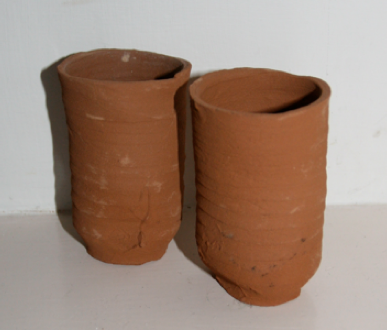
Chai is a catch-all term which covers a great variety of drinks. For instance:
- Plain chai is tea and milk. The tea is, however, brewed differently than in Europe and North America. In its native environs the tea portion of chai is made by boiling tea leaves (or tea granules) in a kettle, large vat if you are buying from a chai wallah or chaiwala (street vendors). The leaves may be left to simmer if sales are lagging. Not at all like the practice of steeping leaves in preheated water for two to three minutes. If the tea preparation is not boiled in a mixture of water and milk, the milk is kept at a constant simmer and may have come from any number of species (in India typically an animal species but in other parts of the world the “milk” may have come from a plant). In India the proportion of milk to tea is typically much higher than in the west. Although the tea used in chai may vary greatly it is almost always a very strong tea often cured into granules instead of tea leaves.
- Masala chai is what is commonly referred to as chai in Europe and North America. It is a spiced milk tea - spices being added to plain chai. As noted in the sidebar to the right the “spices” vary widely depending on the geographic area of origin.
- Chai, even the spicy stuff, is almost always sweet. A full range of sugars are used as sweeteners including brown, palm, coconut, and jaggery. Condensed milk may also be used as a sweetener. If you have a chance be sure to have chai which has used jaggery - the more rural and the poorer the area you are in the more likely you will be successful. Jaggery is a cane sugar in which the molasses has not been separated out - it imparts a very mellow (and quite different) taste than that provided by refined sugars.
- The spices used in chai are combinations of any of the following: fresh ginger, cloves, black pepper, chocolate, cinnamon, cardamon, fennel (seeds), saffron - or anything else you might desire. Do not buy into the concept of a standard recipe for chai - develop your own favorite recipes by experimenting with a wide variety of spices (listed or not above).
Throughout South Asia chai simply means tea. In North America, chai is typically assumed to mean a spiced tea of a particular recipe - not so - chai has many regional variations, at times so significant that you might have difficulty determining their similarity.
Just as there are many types of chai, there are many ways of drinking it. In the state of Uttar Pradesh, India - where the chai is made with “hot” spices it is often served in a cup. To the southwest in Rajasthan, chai is typically served in a cup and saucer, the hot tea being poured into the saucer, from which it is sipped - or - if you stop in a small village far off the beaten track you may have your chai served in unfired clay cups (photo above) which are thrown into the clay heap following your use of them - to be remolded and sun cured for next week’s customer. Still farther to the southwest, in Gujarat, chai has morphed from “hot” to sweet with a strong hint of chocolate and may be served in a cup or small tumbler.
The taste of chai can vary greatly, to develop your own recipe consider the following:
- Vary the proportion of milk to tea;
- Try different milks (different in terms of fat content, different in terms of the plant or animal the milk came from);
- Try different teas (strong teas work best because of the other ingredients) and different brewing techniques;
- Try a full range (and combination) of “spices”, including flavor changers like chocolate, vanilla, or coffee; and
- Consider serving your chai as an iced drink.